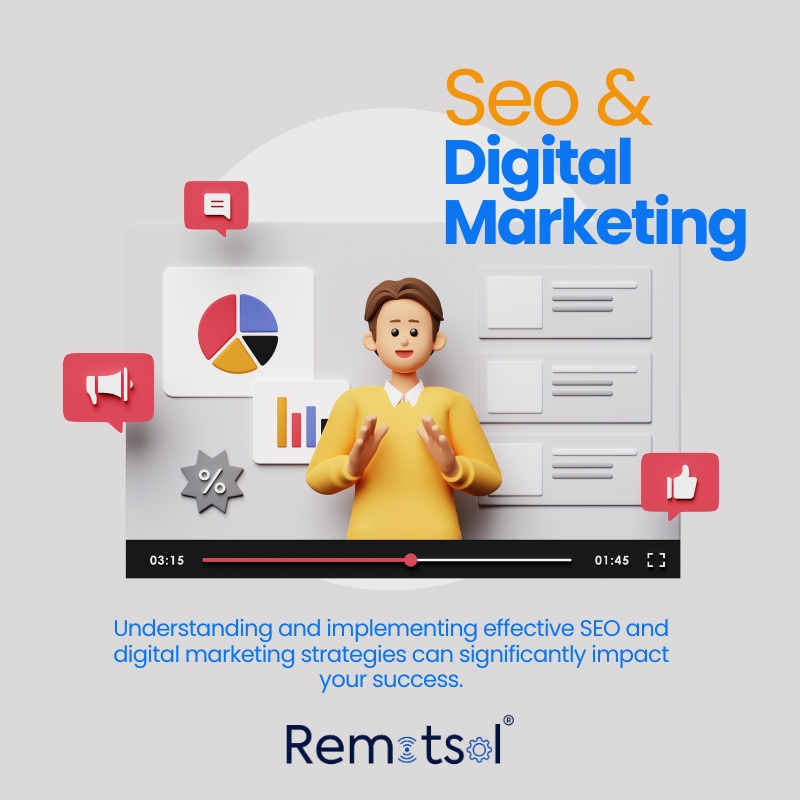
Digital marketing is an essential tool for businesses and individuals looking to grow their online presence. Whether you’re a business owner, entrepreneur, or someone starting a career in digital marketing, understanding the fundamentals can help you achieve success. This guide covers the basics of digital marketing, including strategies, tools, and best practices for beginners.
What is Digital Marketing?
Digital marketing refers to the promotion of products, services, or brands using digital channels such as search engines, social media, email, and websites. Unlike traditional marketing, digital marketing allows businesses to reach a global audience efficiently and cost-effectively.
Why is Digital Marketing Important?
- Cost-effective: More affordable than traditional marketing methods.
- Measurable results: Data-driven insights help optimize marketing efforts.
- Global reach: Businesses can target audiences worldwide.
- Customer engagement: Enhances interaction with customers through multiple channels.
- High ROI: Digital marketing offers a better return on investment compared to traditional marketing.
Key Components of Digital Marketing
1. Search Engine Optimization (SEO)
SEO is the process of optimizing a website to rank higher in search engine results. Higher rankings increase visibility and drive organic traffic to a website.
SEO Best Practices:
- Conduct keyword research to target relevant search terms.
- Optimize website content, meta descriptions, and headings.
- Improve website speed and ensure mobile-friendliness.
- Build high-quality backlinks from authoritative websites.
- Publish valuable, original content consistently.
2. Content Marketing
Content marketing focuses on creating and sharing valuable content to attract and retain a target audience.
Content Types:
- Blog posts and articles
- Infographics and visual content
- Videos and webinars
- E-books and whitepapers
- Podcasts and case studies
Content Marketing Strategy:
- Identify target audience and their pain points.
- Create content that provides solutions and value.
- Distribute content across multiple platforms.
- Measure engagement and refine strategy.
3. Social Media Marketing (SMM)
Social media marketing leverages platforms like Facebook, Instagram, Twitter, LinkedIn, and TikTok to promote brands and engage with customers.
SMM Tips:
- Post regularly and engage with followers.
- Use high-quality images, videos, and infographics.
- Run paid ads to reach a broader audience.
- Collaborate with influencers for wider reach.
4. Pay-Per-Click (PPC) Advertising
PPC advertising is a paid marketing model where advertisers pay a fee each time their ad is clicked. Google Ads and Facebook Ads are popular PPC platforms.
PPC Strategy:
- Choose targeted keywords to attract potential customers.
- Design engaging ad copy with clear CTAs (call-to-action).
- A/B test different ads for better performance.
- Optimize landing pages for higher conversions.
5. Email Marketing
Email marketing involves sending promotional messages to a targeted audience via email.
Email Marketing Best Practices:
- Build a quality email list of engaged subscribers.
- Personalize email content based on user behavior.
- Use eye-catching subject lines to increase open rates.
- Automate email sequences for lead nurturing.
6. Affiliate Marketing
Affiliate marketing allows businesses to generate revenue by partnering with affiliates who promote their products for a commission.
How Affiliate Marketing Works:
- Businesses create an affiliate program.
- Affiliates promote products using unique referral links.
- Businesses pay a commission on sales generated.
7. Influencer Marketing
Influencer marketing involves collaborating with individuals who have a large following to promote products and services.
Influencer Marketing Tips:
- Choose relevant influencers with an engaged audience.
- Use micro-influencers for niche markets.
- Track performance and measure ROI.
Tools for Digital Marketing Success
SEO Tools:
- Google Analytics (website tracking)
- Ahrefs (keyword research & backlinks)
- SEMrush (competitor analysis)
Content Marketing Tools:
- Grammarly (content proofreading)
- Canva (graphic design)
- BuzzSumo (content research)
Social Media Marketing Tools:
- Buffer (social media scheduling)
- Hootsuite (social media management)
- Sprout Social (social analytics)
Email Marketing Tools:
- Mailchimp (email automation)
- ConvertKit (email campaigns)
- ActiveCampaign (email personalization)
PPC & Advertising Tools:
- Google Ads (search and display ads)
- Facebook Business Manager (social media ads)
- Microsoft Advertising (Bing Ads)
How to Get Started with Digital Marketing
- Define Your Goals: Identify what you want to achieve (brand awareness, lead generation, sales, etc.).
- Know Your Audience: Research demographics, interests, and pain points.
- Choose the Right Channels: Focus on platforms where your audience is most active.
- Create a Strategy: Develop a plan for content, SEO, social media, and paid ads.
- Monitor and Optimize: Track analytics, measure performance, and make improvements.
For more Visit our Social Profiles Facebook , Instagram , LinkedIn , youtube and pinterest.

